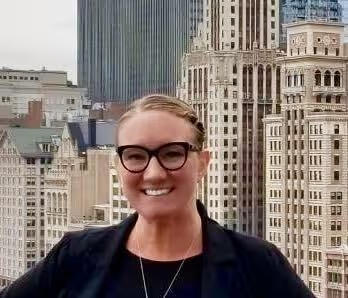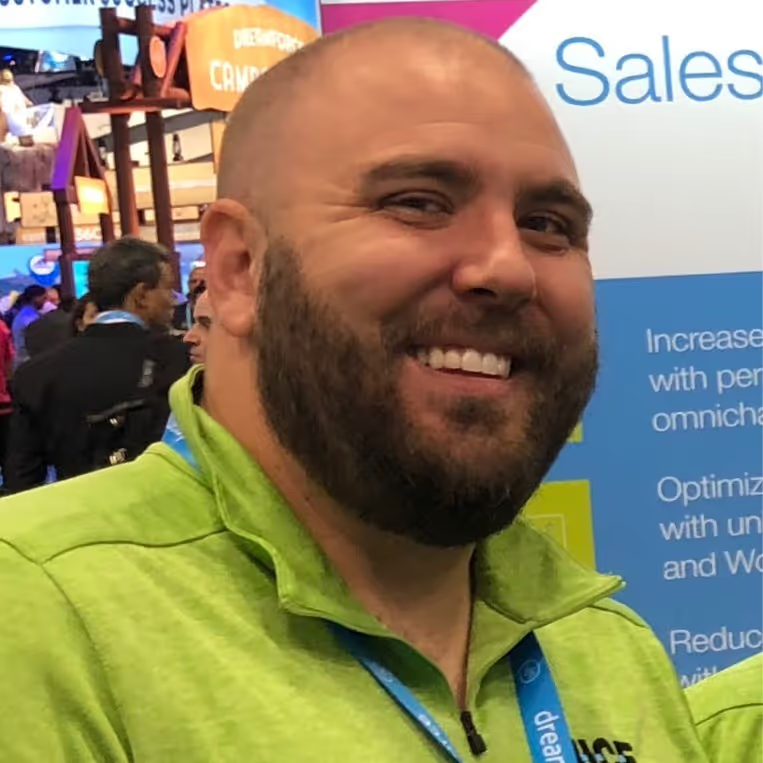Ready to create more pipeline?
Get a demo and discover why thousands of SDR and Sales teams trust LeadIQ to help them build pipeline confidently.
Are your sales strategies keeping up with the shift in B2B-buying motions? If your AEs aren't sourcing pipeline and your SDRs are still focused only on volume, you're leaving revenue and pipeline opportunities on the table. With the advent of AI, automation, and digital-first customer experiences, the roles of Account Executives (AEs) and Sales Development Representatives (SDRs) are at a pivotal juncture. Those who adapt will lead the charge in the new era of sales; those who don't will find themselves sidelined in a game that has moved on without them. This session will challenge traditional sales roles and equip you with insights to lead in the new era of B2B sales.

Jessica Nelson
Sr. Director of Sales Development, Stream

Ron Halbert
VP of Sales Development, Sirion

Sam Lau
Sr. Director of Global GTM Enablement, Anomali

Sean Murray
Director of Sales Development, LeadIQ

Role evolution: Trace the shift from traditional to modern roles of AEs and SDRs, and the necessity for ongoing adaptation in the tech-driven sales environment.

Navigating the digital landscape: Understand how to use AI and automation as tools to augment, not replace, the strategic functions of sales roles, enhancing pipeline development and customer engagement.

Future-proofing your team: Actionable strategies to prepare your sales teams for the future, focusing on essential skills, training, and organizational culture shifts needed to thrive
Get a demo and discover why thousands of SDR and Sales teams trust LeadIQ to help them build pipeline confidently.
While SDRs and AEs are here to stay, their roles are shifting in response to evolving buyer demographics and changing preferences.
Here at LeadIQ, we’re all about helping SaaS sales and GTM teams stay ahead of the curve and learn how to thrive in today’s evolving sales landscape.
In this vein, our very own Director of Sales Development Sean Murray recently hosted a webinar — The evolving role of AEs and SDRs in building your sales pipeline — that examined the shift in B2B buying motions and how SDRs and AEs need to adapt to keep pace. The webinar’s star-studded panel included:
Specifically, our panel explored how the AE and SDR roles are adapting to today’s tech-driven sales environment, how teams can use AI and automation to enhance pipeline development and customer engagement, and strategies sales teams can use to prepare for the future.
Read on for some key takeaways from our webinar and learn how to help your sales and GTM teams soar to new heights.
The way Ron sees it, ensuring that AEs and SDRs are on the same page is the cornerstone of sales success.
To get the role of an AE aligned with the role of an SDR, many organizations encourage them to meet with each other regularly. Unfortunately, the typical structure of these meetings — or lack thereof — doesn’t always yield the best results.
“One of the biggest ways we set our reps up for failure is by saying, okay, schedule a meeting once a week with your AE, and talk to them and find out what they think and what you should be doing,” Ron explains. “I think we need to get more granular in explaining what that meeting should look like.”
Since sales success requires tight coordination between AEs and SDRs, Ron thinks that the first part of 1:1s should focus on getting to know each other “on a deeper level than just a colleague.”
After that, the two roles should work together to identify the accounts to target, drilling down to identify the contacts at specific accounts that should be engaged.
“I’m not saying they need to go to ZoomInfo or LeadIQ or different tools and find the contacts on your behalf,” Ron says. Instead, they should “give you specific personas and titles that you should be targeting on a regular basis.”
Once you’re aligned on who to target, AEs and SDRs should work together to figure out what messaging will resonate with these folks and adjust their sequences accordingly.
“If you don’t outline what the meeting should look like, that’s not how the meeting is going to go down,” Ron explains. “It’s just going to be a random conversation every week between an account executive and a sales developer that could go in a million different directions from a strategic perspective.”
Ever since Salesforce debuted the SDR role nearly two decades ago, many B2B companies have been using the same model with very minor adjustments.
Though people ask her every day whether the SDR role is going the way of the dodo bird due to automation and AI, Jessica believes the role of the SDR is still needed — it’s just long overdue for an upgrade.
“I think that we’ve come to the point where we can allow people to be smarter with how they do things,” Jessica says. “You could spend hours and hours chasing down an account to have some answer and be like, ‘Oh, there’s no way they would ever do business with us, and I should have crossed this off my list weeks ago.’ You can be hyper-efficient with who you’re targeting. You can understand everything about their business. You can understand all the people that you want to talk to, and you can do it so fast.”
In today’s B2B landscape, Jessica stresses the importance of finding target accounts that are interested in the products you’re selling and then giving them the “full white-glove experience.”
For the best results, sales teams need to move beyond meeting with people because they’re the “right person” working at a “great company.” Instead, sales teams should make sure they are adding value by conveying tangible takeaways the prospect can expect to learn during a meeting.
“You’re going to gain something out of this, you’re going to learn about how we’re helping other companies and you’ll walk away with at least a piece of knowledge,” she says.
Since AEs are responsible for hitting their quota regardless of the source of the pipeline, Sam believes they should be encouraged to find their own pipeline.
Otherwise, the partnership between SDRs and AEs might feel a bit lopsided — which will prevent sales teams from reaching their full potential.
“When you create responsibility for one role versus another role that gets compensated differently and creates conflicts between the AE and the SDR in regards to how their partnership needs to work together in a strategic manner, that actually decreases productivity, that actually decreases efficiency, and that also decreases effectiveness,” Sam says. “I think that AEs should be responsible for their quota just like SDRs are responsible for their quota and how they get there is a collaborative effort not even just between AEs and SDRs but AEs, SDRs, marketing, and anybody from that top-of-the-funnel perspective.”
While Ron believes the best AE-SDR combos are legitimate partnerships, he thinks that AEs responsible for sourcing their own pipeline shouldn’t have SDRs help on those accounts because that could create animosity between the two roles.
“If I had a perfect scenario, it would be AEs calling one person at a company and SDRs calling five, they are jointly referencing each other in calls and emails and both prospecting into the account,” he says. “The problem you get when you create a rule that says AEs have to source x percentage of their pipeline, it creates competition between the AE and the SDR. They don’t want to work together because the SDR is here to make money, and the only way they get paid is by sourcing opportunities.”
If your AEs and SDRs are still running off of a decades-old playbook, it’s simply impossible for them to work as effectively as they otherwise could.
By adjusting your approach to prospecting and accommodating today’s B2B buying motions, it becomes that much easier to connect with buyers in a way that truly resonates — making it that much easier to hit your numbers.
To learn more about what SDRs and AEs should do to crush it in an evolving B2B buying landscape, watch the webinar in full above.
While you’re at it, continue your learning by checking out this blog post from Sean: How traditional B2B roles are changing with buyer preferences.